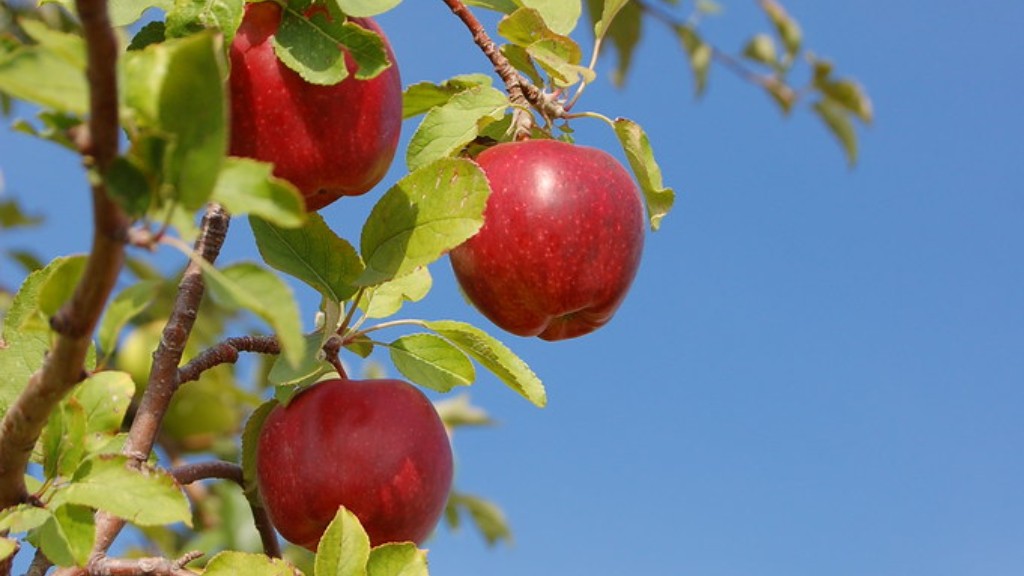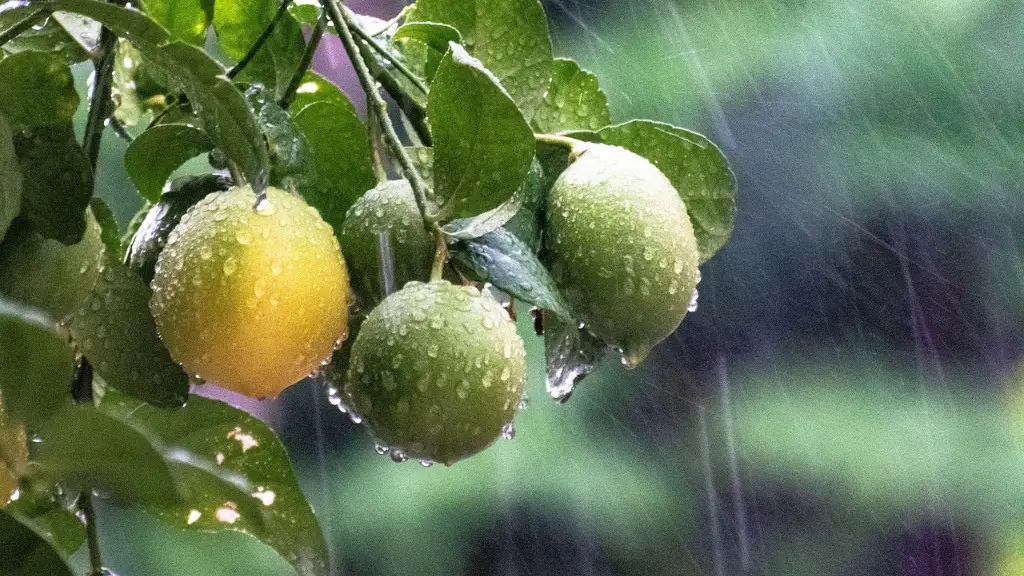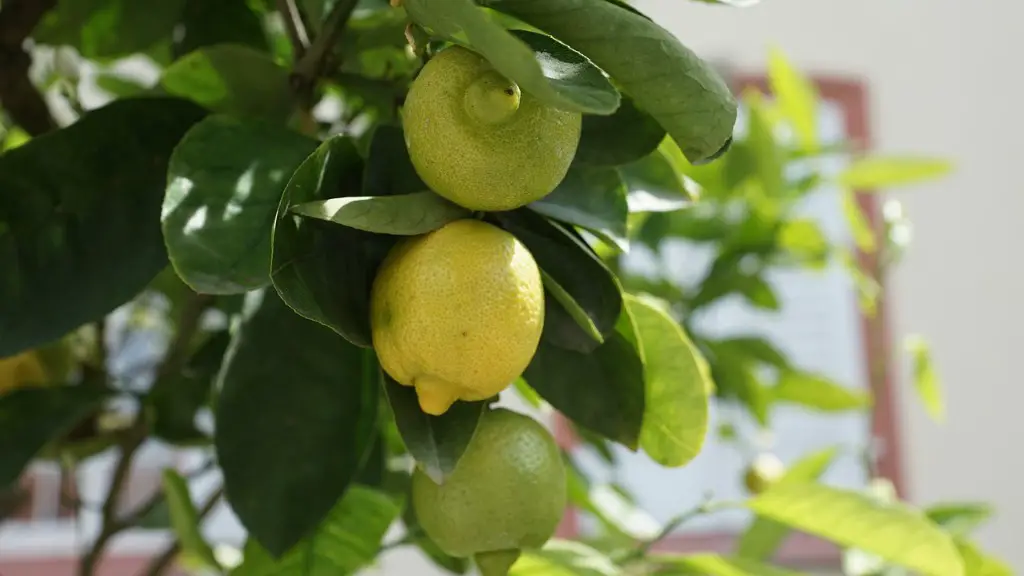An apple tree can take anywhere from four to eight years to grow to its full size, although most will bear fruit after just a few years. Size will also depend on the rootstock, with some variety only reaching six feet tall while others may grow to 30 feet. All apple trees need full sun and well-drained soil with a pH between 6.0 and 7.0.
The average apple tree will take between three and five years to fully mature. However, some apple trees can take up to seven years to reach full maturity.
Do you need 2 apple trees to produce fruit?
Apples are self-unfruitful, meaning they need another variety of apple tree to pollinate in order to produce fruit. Plant at least two different apple tree varieties within 50 feet of one another for a good fruit set. Some apple varieties, such as Golden Delicious, will produce a crop without cross-pollination from a second variety.
Here are some tips to help your trees grow faster:
-Chill hours: The apple tree needs hundreds of chill hours per season to thrive and bear fruit.
-Watering: Young trees require a lot of water – 2 inches of water every week.
-Fertilizing: Use a fertilizer specifically designed for trees.
-Mulch: Mulch around the base of the tree to help retain moisture and keep weeds down.
-Pruning: Prune trees regularly to encourage new growth.
Are apple trees hard to grow
Fruit trees can be a great addition to any home, but they also come with a few potential problems. Pest and disease problems, poor production, and nutrient deficiencies can all be issues when growing fruit trees. Apples are notoriously difficult to grow, and often end up being wormy, bitter, and unappealing. If you’re considering growing fruit trees, be sure to research all of the potential problems so that you can be prepared to deal with them.
The growth rate of spur-type apple trees is moderate, while non-spur apple trees can grow quickly. This is due to the different types of apple trees having different rooting systems. Spur-type apple trees have a smaller root system, which results in a slower growth rate. Non-spur apple trees have a larger root system, allowing them to grow faster.
What is the easiest apple tree to grow?
Fuji apples are a great choice for a backyard apple tree! They are easy to grow and produce sizeable fruit that is sweet and juicy with a crisp bite. Although Fuji apples brown easily, they have a long shelf life compared to other varieties.
Apple trees need to be planted in the spring in most parts of the country. The exact month will depend on where you live, but March and April are ideal for most growers. If you live in a warmer climate (USDA zones seven and warmer), it’s also possible to start planting in the fall.
Do apple trees produce the first year?
It can take a while for an apple tree to bear fruit, especially if it is a standard tree. However, dwarf apple trees may only take a couple of years. If you are growing a tree from seeds, it could take anywhere from five to 10 years for it to bear fruit.
Asian pear trees are a great option for beginner fruit tree growers because they are easy to take care of and produce a lot of fruit. With just a little bit of extra care, you can get a good yield of delicious pears from your tree.
Which fruit tree grows the fastest
If you’re looking for easy-to-grow fruit trees that will produce fruit quickly, try peach trees, apple trees, lemon trees, apricot trees, or fig trees. All of these varieties are fast growers and can provide a bountiful harvest with just a little care and attention.
If you live in a dry area or experience a prolonged period of drought, we recommend 4 to 6 inches of water every couple of weeks for your apple trees.
Do apple trees need full sun?
Apple trees need full sun and well-drained soil to produce their best fruit. The soil should be able to retain some moisture, but not be waterlogged.
Apple trees need at least six to eight hours of sunlight each day during the growing season. They also need a well-drained, fertile soil to thrive. You can improve drainage in your garden by adding organic matter to the soil. This will also help to improve the fertility of the soil.
How tall is a 2 year old apple tree
The Dwarf Jonagold Apple Tree is a delicious dessert apple that is perfect for small spaces. This tree is only two years old and is already 3-4 feet tall, making it a great choice for areas where space is limited. Cold hardiness zones 4 through 9 make this apple tree perfect for a wide range of climates, and the summer through fall harvest season means you’ll always have fresh apples to enjoy. The best seasons to plant this tree are fall through spring in zones 7 through 11 for optimal results.
Two year old trees are typically around 18m tall and have well developed side branches that are trained at around 1-15m on the main stem. This training helps the tree to develop a strong structure that can support the weight of the branches and leaves.
How expensive is an apple tree?
If you want to grow apple trees, you need at least two of them so they can pollinate each other. They should be ordered in December, so they arrive by February, and cost about $25 each.
While most apple trees are self-fertile and will produce fruit without a pollinator, every tree benefits from a partner. In order for pollination to occur, pollen must be transferred from one tree to another. This process not only increases the chances of fruit production, but also results in larger, healthier fruit.
Final Words
Two to three years after planting, your apple tree should start yielding fruit.
Apple trees can take anywhere from three to eight years to produce fruit, depending on the variety. Some varieties, such as the popular Granny Smith, take a little longer to mature. However, apple trees generally have a long lifespan and can provide fruit for many years.





